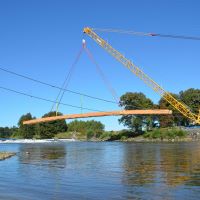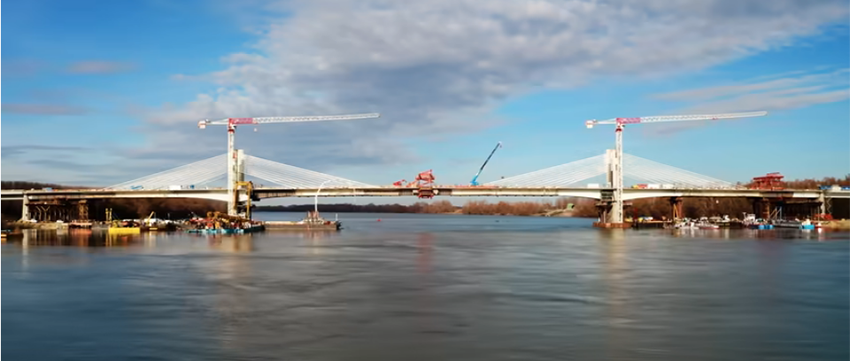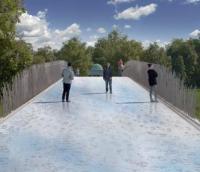The winning design is by South Africa and London-based architecture studio Counterspace, with AKT II as the consulting engineer on the project.

Counterspace’s response to the brief uncovered the story of Paul Panda Farnana, who the studio described as one of the most important, yet least acknowledged, figures of the city. Farnana was born in the Congo in 1888 in the village of Zemba-lez-Moanda and was the son of the village chief. Counterspace said that Farnana’s journey to Europe, active service in World War One, and advocacy for Congolese autonomy serves as an important reminder of forgotten and suppressed migrant voices, past and present.
“Vilvoorde is a city celebrated for its diversity,” said Counterspace principal Sumayya Vally. “It comprises multiple cultures, identities, and narratives. I was deeply moved to uncover the story of Paul Panda Farnana through our research, which then drove our response to the city’s brief for a pedestrian bridge.” Farnana trained as a horticulturist at the Vilvoorde Horticultural School not far from the site. “This project will revive Farnana’s legacy by foregrounding the concept on the species explored in his research, alongside water architectures from the Congo,” she added.
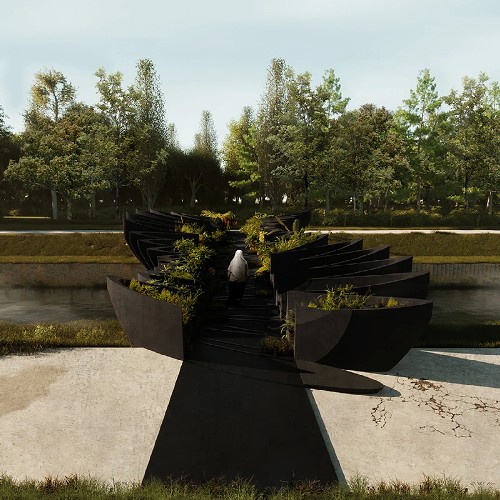
Vally looked to the water architecture of the Congo as one of the starting points in the design. Along the Congo River, fleets of dugout canoes are frequently seen docked alongside one another. As a collective, they form a communal platform, from which trading and gathering can take place.
She said that these images form the basis for the proposed Asiat-Darse Bridge, itself a place of gathering of travellers. The bridge is constructed of a series of 'boats' tied together to cross the canal.
Each ‘boat’ form serves as an isolated seed bed, in which specific plants can be cultivated in order for their seeds to be spread on the wind.
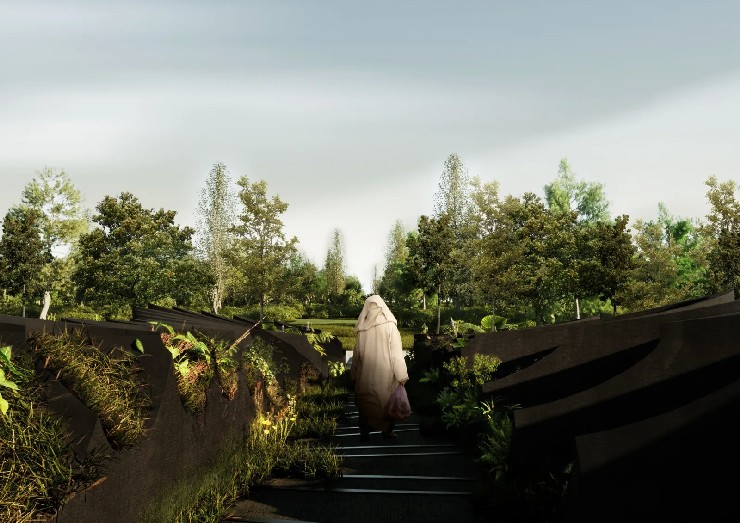
In addition to the main structure, several smaller boat structures are proposed, embedded along the river bank. Each of them will be named for the labourers whose names were included on the register from the Congo, which the studio discovered in its research. Every boat is designed to act as a pollinator and as a little garden for passers-by to rest in.
Vally said: “It is my hope that this project helps to embody and raise awareness on the story of Farnana, and that it reminds us as architects that we have to listen deeply to the grounds of the contexts we work in. There is always architecture waiting to happen in places that are overlooked.”
Kieron Taylor, technical director at AKT II, said: “We were thrilled to be supporting Counterspace with the Asiat-Darse Bridge project. The concept resonates with the purity of a crossing being more than just a means; but a journey and reflection of two points in time.”
The bridge is a project of the city of Vilvoorde and Horst Arts & Music. It is financed by Platform Kunst in Opdracht of the Flemish Department for Culture, Youth and Media, and ANB, the Flemish Agency for Nature & Forest, who partnered with DVW, the Flemish Agency for Waterways. Curator Heidi Ballet is artistic advisor of the project.
Construction is expected to start in April 2024, with a completion date of December 2025.

